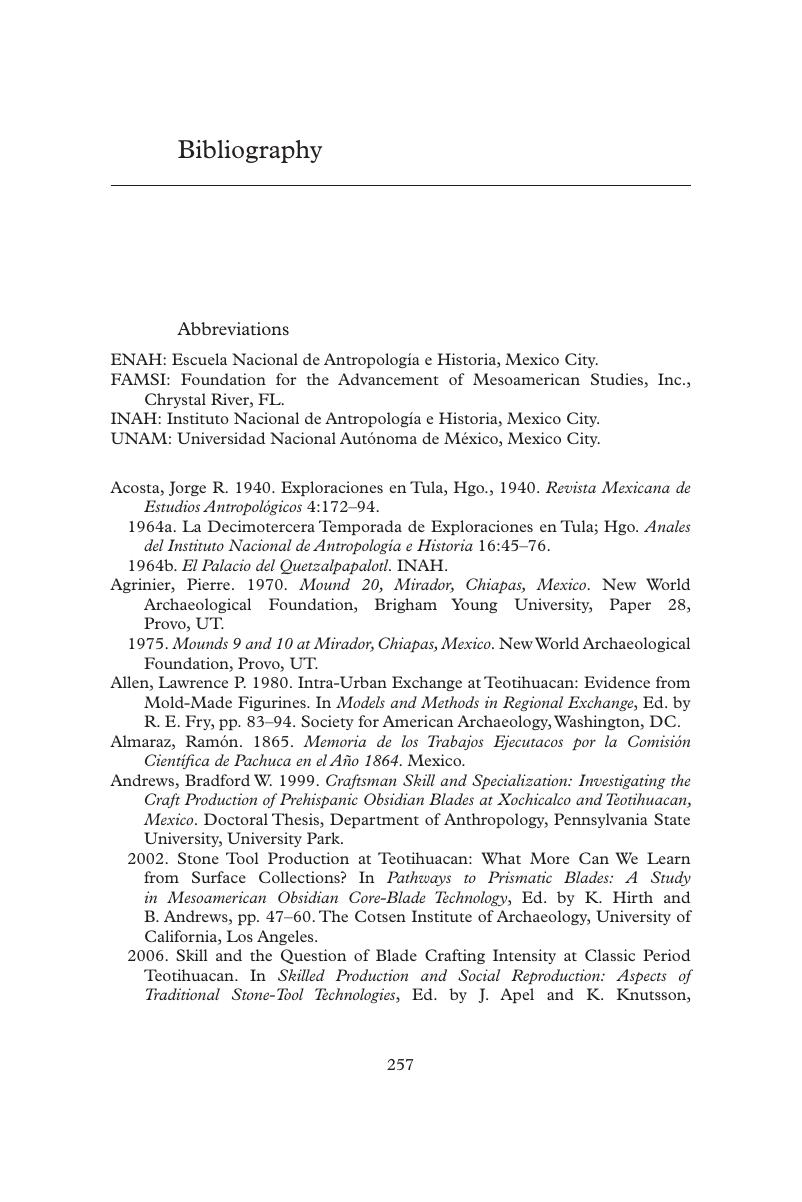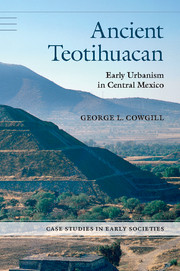Book contents
- Frontmatter
- Contents
- Lists of Figures
- List of Tables
- List of Boxes
- Acknowledgments
- 1 Preliminaries
- 2 Situating Teotihuacan
- 3 Urbanism Begins in Central Mexico: 500–100 BCE
- 4 Teotihuacan Takes Off: 100–1 BCE
- 5 Teotihuacan Supremacy in the Basin of Mexico: 1–100 CE
- 6 Great Pyramids and Early Grandeur: 100–250 CE
- 7 Teotihuacan at Its Height: 250–550 CE
- 8 Teotihuacan Ideation and Religion: Imagery, Meanings, and Uses
- 9 “Interesting Times”: Teotihuacan Comes Apart and a New Story Begins: 550 CE and After
- 10 Teotihuacan in a Wider Perspective
- Notes
- Glossary
- Bibliography
- Index
- References
Bibliography
Published online by Cambridge University Press: 05 May 2015
- Frontmatter
- Contents
- Lists of Figures
- List of Tables
- List of Boxes
- Acknowledgments
- 1 Preliminaries
- 2 Situating Teotihuacan
- 3 Urbanism Begins in Central Mexico: 500–100 BCE
- 4 Teotihuacan Takes Off: 100–1 BCE
- 5 Teotihuacan Supremacy in the Basin of Mexico: 1–100 CE
- 6 Great Pyramids and Early Grandeur: 100–250 CE
- 7 Teotihuacan at Its Height: 250–550 CE
- 8 Teotihuacan Ideation and Religion: Imagery, Meanings, and Uses
- 9 “Interesting Times”: Teotihuacan Comes Apart and a New Story Begins: 550 CE and After
- 10 Teotihuacan in a Wider Perspective
- Notes
- Glossary
- Bibliography
- Index
- References
Summary

- Type
- Chapter
- Information
- Ancient TeotihuacanEarly Urbanism in Central Mexico, pp. 257 - 284Publisher: Cambridge University PressPrint publication year: 2015

